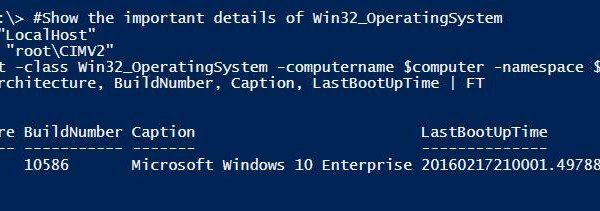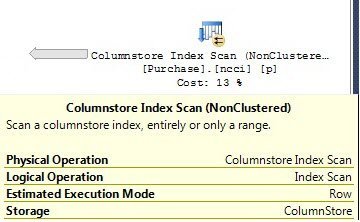I know I have been fortunate to write back-to-back on topics around SQL Server. I get a number of you do take time in writing down to me over emails, comments and even sometimes over Skype pings. I see every such mail as an opportunity to learn something from you for sure. One of my friends from the networking team pinged me to check if I knew a query about the last bootup time he had:
Interview Question of the Week #059 – What are the Limitations of User Defined Functions (UDF) ?
Interview Question of the Week – What are the Limitations of User Defined Functions (UDF) ? Let us learn about that in today’s blog post.
SQL SERVER – Updating Data into ColumnStore Index with SQL Server 2012
Off late I have been writing tons of content working with SQL Server 2016. Some of the cool capabilities was to introduce the ability to update a ColumnStore index. This was also covered in the SQL SERVER 2016: Updating Non-Clustered ColumnStore Index Enhancement earlier. One of the readers asked me an interesting question about being inside SQL Server 2012 and they wanted to write / update their data on the ColumnStore enabled system and what was the process for them. The email started saying they were getting the following error.
SQL SERVER – Attaching and Restoring Database in Clustering Generates An Error – Notes from the Field #115
[Notes from Pinal]: In my career, I have seen many database experts who are great with what they do, but when they have to work with clustering or AlwaysOn solutions, they usually avoid it. The reason is that there are not many experts who know this subject well enough. One thing I always personally felt that the documentation is also not widely available when it is about clustering. If one receives some error, they are usually lost. This is when I reached out to Eduardo and asked him what can we do to if we face error while attaching or restoring database in clustering environment in SQL Server.
SQL SERVER – View Dependencies on SQL Server: Hard & Soft Way
As an independent database consultant, I often face a challenge when analyzing the performance of SQL Server instances, which I see for the first time in my life. In many cases, this may seem a difficult task, because in order to fix something you must first understand the database structure. A great many of the companies do not document their database. And even if documentation exists, it is rarely updated. As a result, we have the following situation – documentation is either obsolete, or does not reflect the actual state of things. Let understand SQL SERVER – View Dependencies.
SQL SERVER – ShowPlan XML Additions for ColumnStore Indexes
The last time when I wrote about ColumnsStore FAQ, one of the readers had an interesting question. The question was around how to identify the traits of using a column store inside an execution plan. The very thought got me thinking. I was thinking where to start. I remembered that ShowPlan XML was a great way to see some of these attributes. The very next question that came up, what should one look forward to inside a ShowPlan XML.
Interview Question of the Week #058 – What is the Difference Among DECIMAL, FLOAT and NUMERIC Datatype?
Question: What is the Difference Among DECIMAL, FLOAT and NUMERIC Datatype? Let us learn more.










